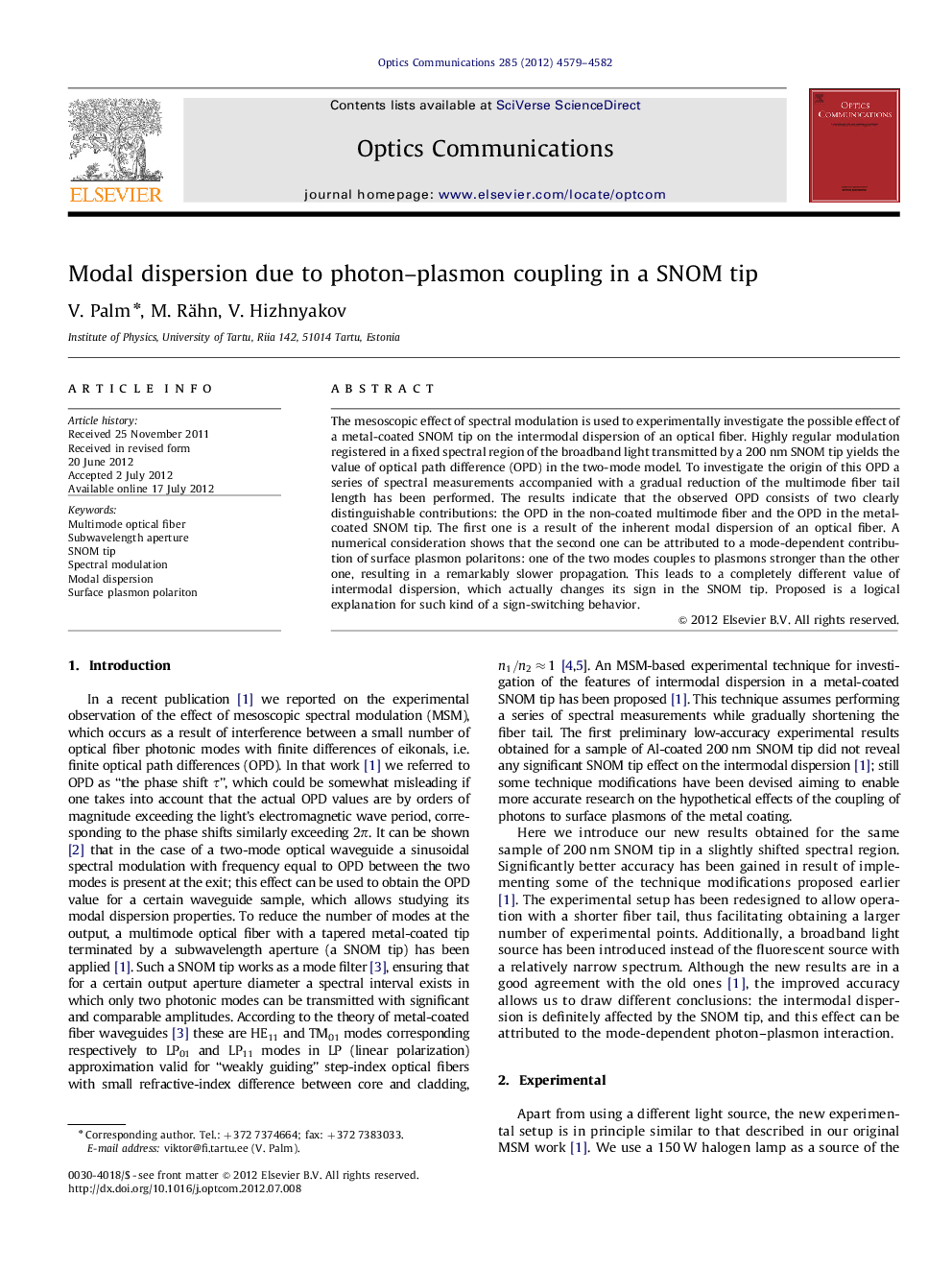| Article ID | Journal | Published Year | Pages | File Type |
|---|---|---|---|---|
| 1535994 | Optics Communications | 2012 | 4 Pages |
The mesoscopic effect of spectral modulation is used to experimentally investigate the possible effect of a metal-coated SNOM tip on the intermodal dispersion of an optical fiber. Highly regular modulation registered in a fixed spectral region of the broadband light transmitted by a 200 nm SNOM tip yields the value of optical path difference (OPD) in the two-mode model. To investigate the origin of this OPD a series of spectral measurements accompanied with a gradual reduction of the multimode fiber tail length has been performed. The results indicate that the observed OPD consists of two clearly distinguishable contributions: the OPD in the non-coated multimode fiber and the OPD in the metal-coated SNOM tip. The first one is a result of the inherent modal dispersion of an optical fiber. A numerical consideration shows that the second one can be attributed to a mode-dependent contribution of surface plasmon polaritons: one of the two modes couples to plasmons stronger than the other one, resulting in a remarkably slower propagation. This leads to a completely different value of intermodal dispersion, which actually changes its sign in the SNOM tip. Proposed is a logical explanation for such kind of a sign-switching behavior.
